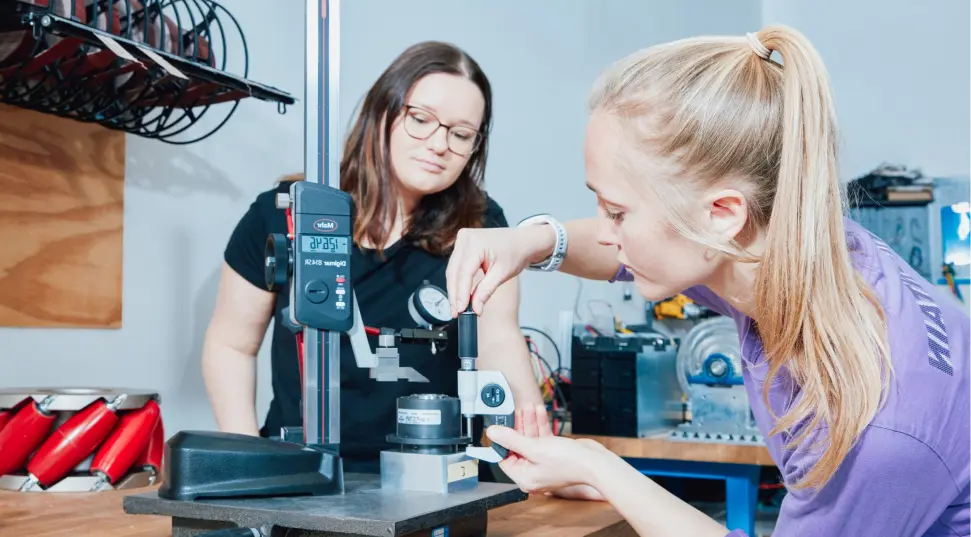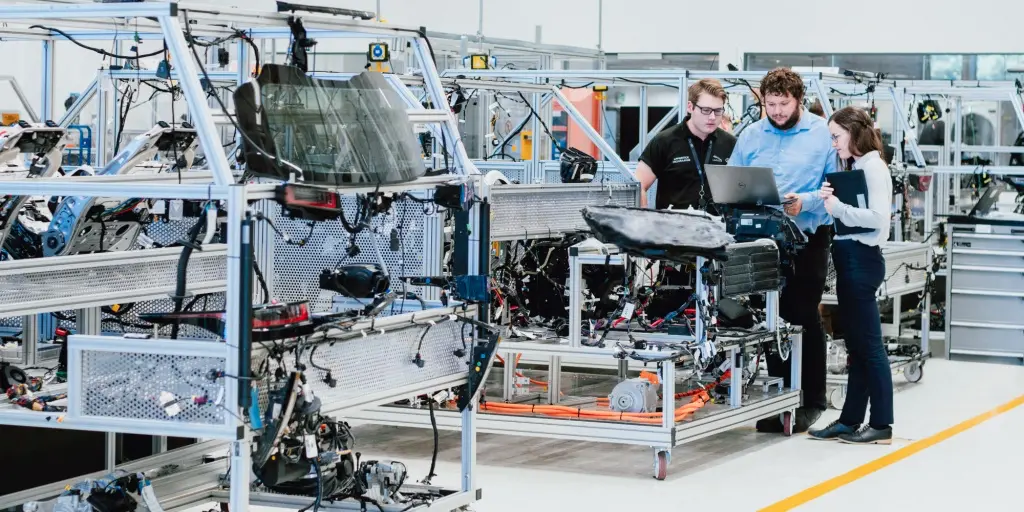Everybody is talking about Design Thinking (DT), but not everyone knows what it means to work with this process. In this article, we will take you on a quick tour through the five phases of Design Thinking.
Design Thinking Phases
Design Thinking is an innovative method to solve complex problems by developing user-centric solutions in a short amount of time. The iterative Design Thinking process enables you to create innovative products in five phases: define, empathize, ideate, prototype and test.
In the following sections, you’ll get a short overview about the goals of each step including some methods how to reach those goals.

Phase 1: Empathize
In the Empathize phase, your goal is to gain as much as insights about your user group as possible in order to reveal their pains. To do so, you can observe them interacting within their environment or engage them in interviews. In this phase, you only seek to understand the user – so have fun and be non-judgemental. Try to gather as much information as possible through methods such as the Five Whys, extreme user observation, or interview stories and insight cards. All of this will help you to scope a meaningful point-of-view statement in the second phase.
Phase 2: Define
You continue the Design Thinking process with the Define phase. Your goal here is to define the user’s view of the problem, i.e. to develop a 360 degree understanding of your user. Useful methods to do so are e.g. empathy maps or customer journeys. Based on your findings, you can create user personas that help to define the desired point-of-view statements. By creating personas, you also make sure to not lose any important insights that you have gained out previously. A detailed user persona with a meaningful challenge set you on the right path for the next phases in which you start working on user-centric solutions.
Phase 3: Ideate
In the third Design Thinking phase, you begin to ideate on possible solutions for your user’s problem. Be open-minded, create broad solutions and do not think about difficulties for now. Ideally, you build on the ideas of other team members, focus on one conversation at a time and go for quantity. The larger the solution space, the better. There are numerous creativity methods that you can use in this phase. Some of our favorite ones are: the 6-3-5 method, Crazy 8 and the idea tower. It can also be helpful to start a workshop with people that represent your persona, experts and non-users to get even more insights and ideas. In the end, you choose those solutions that best fit the needs of your user persona. With those, you start prototyping in the next Design Thinking phase.
Phase 4: Prototype
In the Prototype phase, your goal is to create a maximum realistic prototype that tests the key features of your solution. Keep it simple, fail fast and iterate towards the prototype that includes all your requirements and solves the main user problem. Further, do not invest in too many resources in this phase. Methods like wireframes, 3D printing or even role-playing and simple tinkering materials will help you to iterate fast and keep costs down.
Phase 5: Test
During the Test phase, you engage in continuous, short-cycle innovation processes and product improvements triggered by tests. This means that you want to find out whether your solution solves the user’s pain while gathering further feedback to make your solution even better. Make sure to create a realistic test situation with the right people – otherwise you will not get meaningful feedback. Helpful methods in this last Design Thinking phase are feedback capture grids, A/B testing or hypothesis testing plans.
Advantages and Disadvantages of Design Thinking
After this short walk through Design Thinking, you might wonder about advantages and disadvantages of the process. That is why we have summarized the main advantages and disadvantages of Design Thinking for you.
Advantages of Design Thinking are diverse as it helps to create, structure and plan innovative solutions. First of all, the team always knows in which phase they are and how the project proceeds. This gives them an important structure and safety feeling. Further, the agile method helps you to create innovative products in a blink of an eye. Yes, it is quick and dirty, but you can develop user-centric solutions without spending tons of money on “innovations” that no one really needs. With the great range of different methodologies, Design Thinking also gives you maximum freedom for your product development process. In fact, we at Motius have created our own Design Thinking process for technology innovation.
Despite the advantages, Design Thinking has some disadvantages as well. One obstacle can be how to define the user’s problem, especially if your team is biased or if you fail to gain meaningful user insights. For every Design Thinking process, it is crucial to know what problem you are trying to solve. Another common mistake is to just observe niche users instead of observing non-users as well. Oftentimes, teams ignore that non-users can provide a lot of valuable insights too.
What To Do Next
You should use Design Thinking to solve complex problems and create innovative, user-centric products that really matter. If you want to know more about Design Thinking and how it can be applied, we’ve got you covered. If you are ready to take the next step and put hands-on advice into practice, make sure to check out our Design Thinking Method Set – a free card game that helps you using our custom Design Thinking process with a focus on technology innovation.
But despite all these options, we would also be happy to just talk to you about what Design Thinking can do for your project. Simply talk to our experts below.












